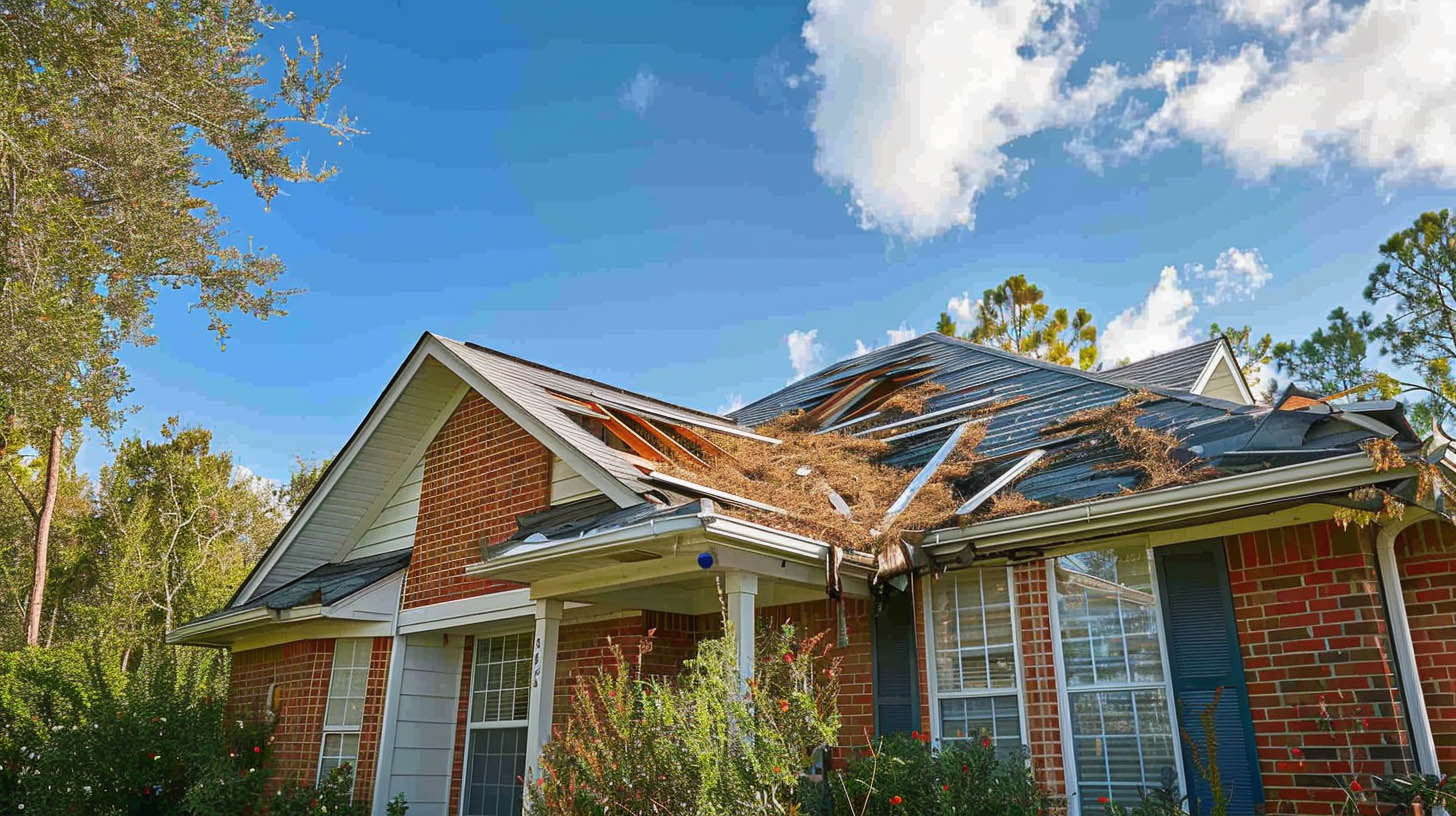Summer storms often bring high winds that can severely impact your roof. For expert help, contact Champion Restoration and Construction, located in Chantilly, VA, for professional inspections and repairs.
Assessing Wind Damage
Wind Speed and Damage Correlation
- 19 to 24 mph: Large branches and small trees sway.
- 25 to 31 mph: Large branches in continuous motion, whistling sounds in power lines.
- 32 to 38 mph: Whole trees in motion, inconvenience when walking.
- 39 to 46 mph:Strong winds can break twigs and small branches, making walking difficult.
- 47 to 54 mph: Structural damage, roofing tiles blown off.
- 55 to 63 mph: Considerable structural damage, small trees may be blown over.
- 64 to 75 mph: Widespread damage, larger trees uprooted.
Identifying Signs of Wind Damage
Shingle Damage
- Missing shingles indicate clear roof damage.
- Damage usually starts at the edges or in areas where shingles were already loose.
- Shingle damage can lead to major repairs or replacements.
Granule Loss
- Normal wear may cause minor granule loss over time.
- Bare spots or cracks indicate seal breakage and potential for shingle flapping.
- Minor localized damage can be repaired before it worsens.
Debris
- High winds (30-40 mph) can cause branches to break off.
- Inspect your roof for debris after a storm.
- Perform a safe roof inspection or hire a professional if needed.
Water Leaks
- Compromised shingles can lead to water leaks.
- Look for discoloration or mold smells on ceilings and walls.
- Address minor leaks promptly to prevent further damage during future storms.
Conclusion
Identifying and addressing wind damage early can save you from costly repairs. Champion Restoration and Construction offers comprehensive inspections and repair services to ensure your roof remains in top condition.
For more on Essential Questions to Ask Before Starting a Holiday Roofing Project, click here.

